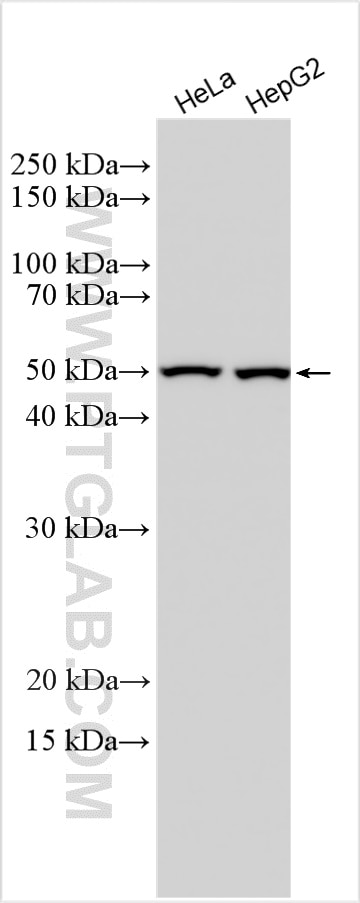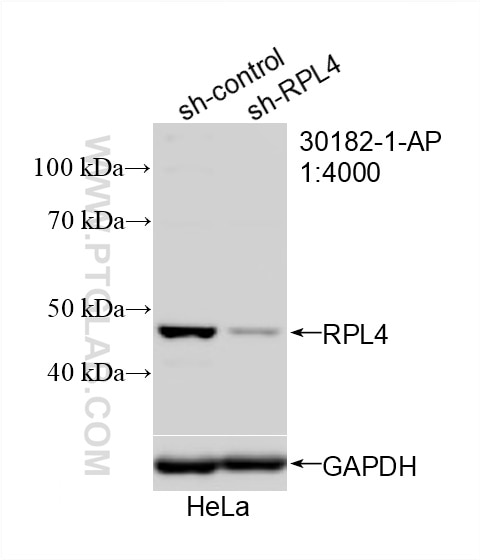- Phare
- Validé par KD/KO
Anticorps Polyclonal de lapin anti-Ribosomal protein L4
Ribosomal protein L4 Polyclonal Antibody for WB, ELISA
Hôte / Isotype
Lapin / IgG
Réactivité testée
Humain
Applications
WB, ELISA
Conjugaison
Non conjugué
N° de cat : 30182-1-AP
Synonymes
Galerie de données de validation
Applications testées
| Résultats positifs en WB | cellules HeLa, cellules HepG2 |
Dilution recommandée
| Application | Dilution |
|---|---|
| Western Blot (WB) | WB : 1:5000-1:50000 |
| It is recommended that this reagent should be titrated in each testing system to obtain optimal results. | |
| Sample-dependent, check data in validation data gallery | |
Informations sur le produit
30182-1-AP cible Ribosomal protein L4 dans les applications de WB, ELISA et montre une réactivité avec des échantillons Humain
| Réactivité | Humain |
| Hôte / Isotype | Lapin / IgG |
| Clonalité | Polyclonal |
| Type | Anticorps |
| Immunogène | Ribosomal protein L4 Protéine recombinante Ag32272 |
| Nom complet | ribosomal protein L4 |
| Masse moléculaire calculée | 48 kDa |
| Poids moléculaire observé | 48 kDa |
| Numéro d’acquisition GenBank | BC009888 |
| Symbole du gène | RPL4 |
| Identification du gène (NCBI) | 6124 |
| Conjugaison | Non conjugué |
| Forme | Liquide |
| Méthode de purification | Purification par affinité contre l'antigène |
| Tampon de stockage | PBS avec azoture de sodium à 0,02 % et glycérol à 50 % pH 7,3 |
| Conditions de stockage | Stocker à -20°C. Stable pendant un an après l'expédition. L'aliquotage n'est pas nécessaire pour le stockage à -20oC Les 20ul contiennent 0,1% de BSA. |
Informations générales
60S ribosomal protein L4 is encoded by RPL4 (or RPL1) gene. RPL4 is a component of 60S subunit of ribosome, and belongs to the L4E family. By interacting with c-Myb, RPL4 plays a important role in c-myc expression in response to growth factor and nutritional signals. Recently RPL4 was reported to be able to increase effeiciency of viral recoding sequence.
Protocole
| Product Specific Protocols | |
|---|---|
| WB protocol for Ribosomal protein L4 antibody 30182-1-AP | Download protocol |
| Standard Protocols | |
|---|---|
| Click here to view our Standard Protocols |



